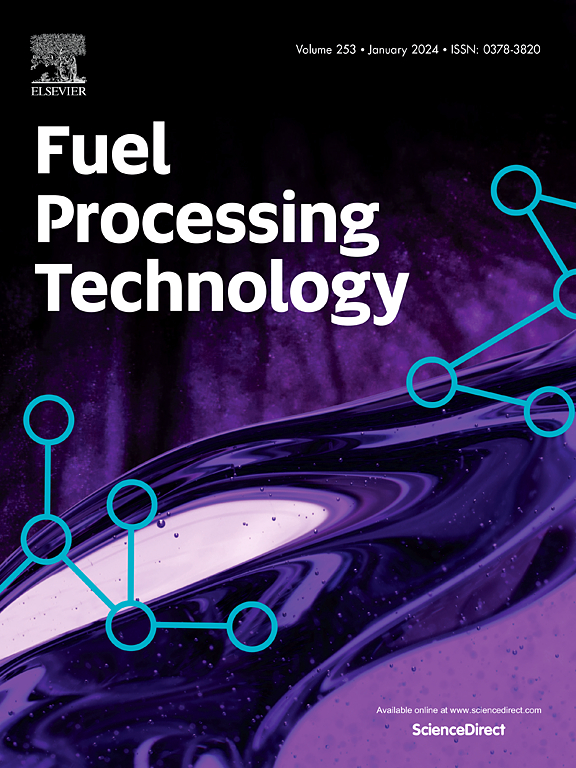High yield methane production from the hydrogenation of CO₂ using non-thermal plasma/catalysis
IF 7.2
2区 工程技术
Q1 CHEMISTRY, APPLIED
引用次数: 0
Abstract
In this work, a dielectric barrier discharge (DBD) non-thermal plasma/catalytic reactor was used under a range of process conditions, designed to maximise the hydrogenation of CO₂ to methane. A Ni/Al₂O₃ catalyst was used in the plasma/catalysis reactor and the process parameters investigated were the effect of input plasma power, catalyst temperature, catalyst weight hourly space velocity (WHSV), and H₂/CO₂ ratio in relation to the methanation of CO₂. In addition, the effect of the catalyst active metal type (ruthenium, cobalt, and lanthanum) supported on Al₂O₃ under the optimum reaction conditions was investigated. The optimised system, using Ni/Al2O3, achieved a CO₂ conversion of 82.2 % with an energy efficiency of 22.5 gCO₂kWh−1, CH₄ selectivity of 90.2 % and energy efficiency of 7.4 gCH₄kWh−1 at the plasma input power of 70 W, catalyst temperature of 280 °C, catalyst WHSV of 768 ml/gcath, and H₂/CO₂ ratio of 4. The performance of the active catalyst metals in relation to CO₂ conversion to methane was Ru > Ni > Co > La.
利用非热等离子体/催化从CO₂加氢生产高产甲烷
在这项工作中,在一系列工艺条件下使用了介质阻挡放电(DBD)非热等离子体/催化反应器,旨在最大限度地将CO 2加氢为甲烷。在等离子体/催化反应器中使用Ni/Al₂O₃催化剂,考察了输入等离子体功率、催化剂温度、催化剂质量、H₂/CO₂比对CO₂甲烷化反应的影响。此外,在最佳反应条件下,考察了催化剂活性金属类型(钌、钴和镧)对Al₂O₃的影响。在等离子体输入功率为70 W,催化剂温度为280℃,催化剂WHSV为768 ml/gcath, H₂/CO₂比为4的条件下,Ni/Al2O3体系的CO₂转化率为82.2%,能量效率为22.5 gCO₂kWh−1,CH₄选择性为90.2%,能量效率为7.4 gCH₄kWh−1。活性催化剂金属在CO₂转化为甲烷方面的性能为Ru >;倪祝辞公司在洛杉矶。
本文章由计算机程序翻译,如有差异,请以英文原文为准。
求助全文
约1分钟内获得全文
求助全文
来源期刊

Fuel Processing Technology
工程技术-工程:化工
CiteScore
13.20
自引率
9.30%
发文量
398
审稿时长
26 days
期刊介绍:
Fuel Processing Technology (FPT) deals with the scientific and technological aspects of converting fossil and renewable resources to clean fuels, value-added chemicals, fuel-related advanced carbon materials and by-products. In addition to the traditional non-nuclear fossil fuels, biomass and wastes, papers on the integration of renewables such as solar and wind energy and energy storage into the fuel processing processes, as well as papers on the production and conversion of non-carbon-containing fuels such as hydrogen and ammonia, are also welcome. While chemical conversion is emphasized, papers on advanced physical conversion processes are also considered for publication in FPT. Papers on the fundamental aspects of fuel structure and properties will also be considered.
 求助内容:
求助内容: 应助结果提醒方式:
应助结果提醒方式:


